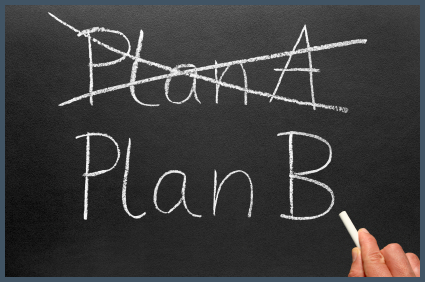What is Plan B?
An intervention with proper planning and carried out correctly will result many times in an addict agreeing to receive help. But you must accept the fact that ultimately the addict may for whatever reason say “NO”. This scenario needs to be thought out in advance so that the family consistently moves to the proverbial –plan B.

If for whatever reason the intervention fails, the addict is still an addict and statistically the situation will likely get worse not better, so what is the action taken by the family at this point? The family knows the person is addicted and the addict has been confronted with this fact so whatever message the family gives the addict at this point is critical.
By refusing to seek treatment the addict in general is saying to the family “ I want to continue to use drugs. I want to continue the families suffering. I want to control my own life.” The family will intern answer with every word and action taken. If the family says «I understand. Please leave and don’t expect any money or support in any way, unless you decide to get help.” Then the addict is left to run his/her life, which they generally do not have the ability to do, and before long you have a person who “DECIDES” that treatment is the best thing and calls saying just that. If on the other hand the family sort of acts disappointed and carries on as usual, then the addict gets the message.
That it is OK to continue this life style and will put up even more resistance to intervention in the future having bested the intervention team previously.
Obviously, there are certain risks involved with either approach and should be evaluated clearly beforehand. One thing is certain, as long as the addict continues to use, they risk the only one thing they have; their life.
The bottom line is that an addict needs to decide, for whatever reason, that they need help. Most “locked down» approaches fail because the addict is not part of the recovery. The only way an addict can usually fight against the addiction is when enough external pressure is applied to cause them to decide to quit. Many call this “the bottom”. However, there can be many bottoms.
Obviously some are lower than others, but each can make a person quit drugs. It just depends on what happens when the person is there. For instance a person is facing serious charges and is very scared. The person will either have an intervention and go to treatment or will get through this situation and be back out using. In the final analysis, it is often the family who both spots the incident and uses it to achieve treatment, or misses and waits.

